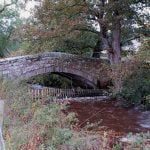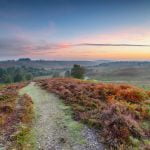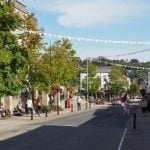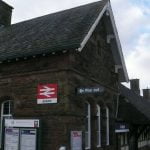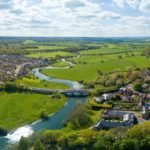
Penrith – The Edens Historic Market Town
Penrith is an old market town situated in the Cumbria’s Eden Valley, North West England. Its located at a major road intersection, i.e. that of the north-south M6 motorway, and the east-west cross-Pennines A66 trunk road. It also lies between the River Eamont and the River Petteril, in an area of undulating countryside. Penrith also lies just 3 miles (5 km) outside the boundaries of the UK’s biggest National Park, the Lake District.
It’s probably best known for its large 14th-century Castle and the Beacon Monument, set on Beacon Hill that overlooks the town from the north. The 2011 UK official census put the population of Penrith at 15,181. Eden District in which Penrith lies has the lowest population density in England.
- The Penrith Group
- Events in Penrith
- The Penrith Business Directory
Looking for more about Penrith and what’s going on?
Join Five Minutes Spare and become a member of the Penrith group to see posts and more
Find out what events are taking place in the Cumbria Town of Penrith
Looking for a particular Business in Penrith?
Head over to the Penrith Business Directory to find a business registered with Five Minutes Spare
Penrith – A Fleeting History
The history of Penrith is known to date back to Roman times. Such was its strategic importance to the Romans. They built two large forts in the area. One was constructed at Brougham (Brovacum), and the other about 5 miles north of the town, near Plumpton (Voreda).
It was at one time was thought to be the possible seat of power for the ancient Kingdom of Rheged, which is known to have existed between the 5th and 7th centuries. Geographically, it lies at the heart of the Reghed kingdom, which was thought to include much of modern-day Cumbria and the southwest Scottish Borders. However, recent archaeological discoveries in the Scottish region of Galloway, now suggests Reghed’s kings may well have been based in that area.
Post-Doomsday Book
In the 10th century, it was part of Scotland, ruled by Malcolm I. The name ‘Penrith’ itself is derived from the Celtic language, meaning ‘Red Hill’. In 1092, William II made it part of Norman England, enabling Penrith to become a thriving market town. By 1167 it was referred to as ‘Penred Regis’, the King’s Penrith. Later it became a hub for an elitist group of landowners in the area, who enjoyed the benefits of royal privilege.
In 1223, Penrith was granted a market charter by Henry III. (The two oldest streets in Penrith, Burrowgate and Sandgate, are known to date back to that time). By the mid-thirteenth century, Penrith was becoming increasingly prosperous and duly recognised as one of the major economic centres of the region.
The building of Penrith Castle began in 1399 when a stone wall was added to the earlier Pele (or Peel) tower. The Castle was enhanced over the succeeding 70 years, becoming a royal fortress for Richard, Duke of Gloucester in 1483. The Duke went on to become King Richard III of England.
The town became renowned not only for its market but also for its many pubs and inns. However, pubs weren’t merely places to eat and drink. They were places where local food produce was sold. Amongst other foodstuffs, sales of various grain types are known to have been held at public houses around the Cornmarket, giving rise to its name. Typically, farmers brought their produce into town by horse and cart, promoting the need for stables, which were usually provided at the back of pubs.
20th Century Penrith
As late as 1907, with a population of just 9182, this quaint town is known to have had at least 57 pubs. Many of the alleyways leading from the front to the back of the towns’ old pubs used to facilitate stabling have survived, and are very much in use today.
In 1920, a headline incident occurred in Penrith that brought the town very much into the national spotlight. The notorious ‘monocled mutineer’, Percy Topliss, was shot and killed by police at Plumpton, just outside Penrith. He is buried in Penrith’s Beacon Edge Cemetery in an unmarked grave. His monocle is on display in Penrith and Eden Museum.
He was a serial con artist, often posing as an army officer both during and after the First World War. He became the country’s most wanted man following the murder of a taxi driver and the wounding of a police officer who attempted to apprehend him.
Most historical buildings in Penrith are constructed of the distinctive local red sandstone and Westmorland slate, the commonest traditional roofing material. The two locally sourced building materials combine to define the unique architectural character of the town. Many of the town’s medieval and post-medieval buildings have been lost, but a small number do remain. The Gloucester Arms and the Two Lions Pub in Dockray are examples, as are some of the buildings around Burrowgate and Sandgate.
The Modern Era
With its popular markets and abundance of bespoke family-run shops, Penrith is very much the regional centre for trade, industry and services within the Eden Valley area. As a small market town, it relies quite heavily on the tourist trade. It has most of the familiar high street chain stores, mixed with several small local specialist shops. Most of the town’s shops can be found in Middlegate, Little Dockray, Devonshire Street, Market Square, The Cornmarket, King Street, Angel Lane and Devonshire Arcade. There are also some shops in Burrowgate, Brunswick Road and Great Dockray.
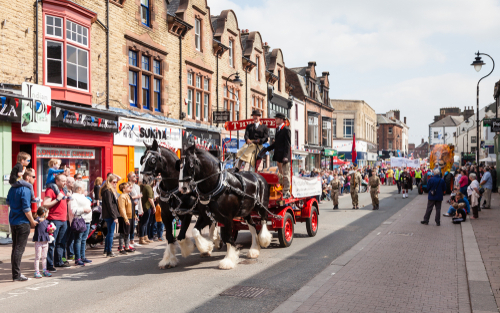
A May Day parade in Penrith Town Centre Image: ATGImages/Shutterstock.com
Every Saturday there is an outdoor market at the Auction Mart, on the outskirts of the town, near the Junction 40 of the M6. Then, on the 3rd Tuesday of the month, between March and December, there is a small farmers’ market held in Market Square.
Getting there and around Penrith
By Car
The Town is very accessible by road. Its major road link is the M6 motorway, linking it to Carlisle and Scotland in the north, and the rest of England in the south. The town centre is just a few minutes drive from the M6’s Junction 40. The town also has a secondary north to south road link, the A6, which was the forerunner to M6. The A66 also passes through Penrith, linking to Scotch Corner and the A1 in Yorkshire to the east, and traversing through the Lake District and onwards to the Cumbrian coast, in the west.
By Train
Penrith (North Lakes) Train Station is located just a few minutes walk from the town, opposite the Castle. The station lies on England’s West Coast Main Line, connecting to Carlisle and Scotland in the north and the major railway hubs of Preston and London to the south. Be aware that not all trains on the line stop here.
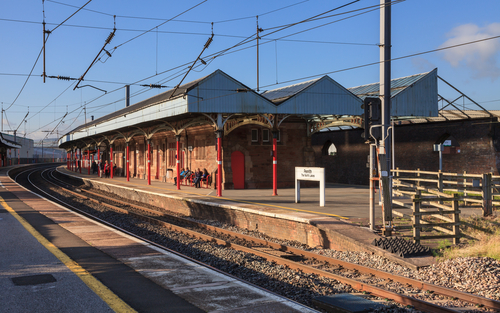
Image: ATGImages/Shutterstock.com
Penrith Railway Station – on the West Coast Main Line
By Bus
Local buses are operated mostly by Stagecoach, who provide a frequent service to Carlisle, Keswick, West Cumbria and Ullswater. They also have some buses to the major towns in the South Lakes. Local firm NBM Motors run a town service. Fell runner buses connect Penrith to villages in the Eden Valley. There is also a daily service to Alston and Newcastle-upon-Tyne, provided by a local operator. National Express operate two long-distance bus routes which stop in Penrith. The bus station is in the town centre just off Sandgate.
By Air
The nearest international airport is Newcastle, which is linked by road via the A66 and A1, about 73 miles (117 km) away. However, if you’re travelling by public transport, it’s probably easier to get to/from Manchester Airport directly by train, which is about a 2 hours journey.
Places to see in Penrith
For a small town, there are lots of places to see in and around the town, some of them would be:
Penrith Castle and Castle Park
Penrith Castle was built at the end of the 14th century by Ralph Neville, as a defence against the Scots. Contrary to normal practise, the castle was not built at the highest point of the hill, which lies about 170 m away. It’s thought the location was probably the site of an old Roman fort, and that its partially intact defensive structures were reused.
Following the death of Richard Neville in 1471, the castle was granted to Richard, Duke of Gloucester (1452–85), who later became King Richard III. He resided at the castle for periods between 1471 and 1485, in his role of sheriff of Cumberland. After Richard became King in 1483, the castle remained Crown property, but it was never used again as a permanent residence.
The ruins of the castle are set in a scenic park and gardens. The facilities in the park include a children’s play area, putting green, crazy golf course, tennis courts, bowling green and café.
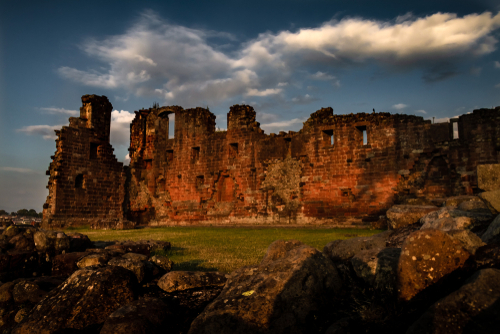
Image: Sara Edwards/Shutterstock.com
Penrith Castle – set on the outskirts of the town
Lowther Castle & Gardens
Lowther Castle stands on an estate that has been occupied by the Lowther family for over 800 years. It’s the third castle built on the site and was completed in 1806. The gardens date from the 16th century but were famously remodelled by the renowned Capability Brown in the early 19th century. The last resident was the fifth Earl of Lonsdale, who left the castle on New Year’s Day 1936. In 2010, the Lowther Castle & Gardens Trust obtained substantial funds to renovate the castle and grounds to its former imposing and stately glory.
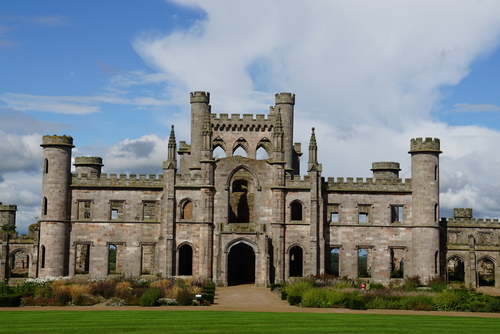
Image: condruzmf/Shutterstock.com
The imposing and stately Lowther Castle
Brougham Castle
Brougham Castle was founded in the early 13th century and is only two miles away. The largely original but substantially intact castle is set at a crossing of the River Eamont in scenic countryside. It was originally the site of a Roman fort, which was later procured by the Norman family of Vieuxpont.
They went on to build the castle as an exclusive residence and fortification against Scots invaders. Today, the top of the keep provides panoramic views over the Eden Valley.
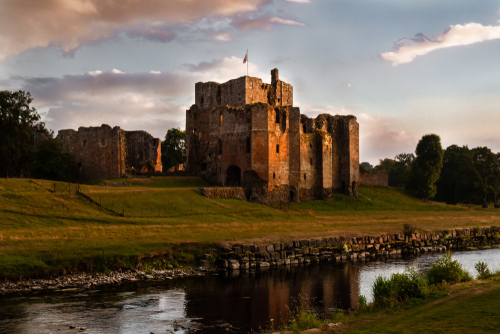
Image: Sara Edwards/Shutterstock.com
Brougham Castle – an extensively original 13th-century fortress
Askham Hall
Askham Hall, situated in the village of Askham just outside Penrith, dates back to the 13th century. It has been the family home of Lord Lonsdale since the family abandoned Lowther Castle in 1936. The hall has recently been transformed from an old fashioned stately family home into a unique, contemporary country retreat. As well as the opportunity to view its splendid gardens, you can also fine dine or even stay at the hall.
Penrith Beacon
Overlooking the town at the top of Beacon Hill, is Penrith Beacon, a stone monument built-in 1719. The monument is sited where beacons had been lit in previous times of war and pending crisis, since the time of Henry VIII. You can walk up to the beacon, and on a clear day, get a fantastic view across the Eden Valley to the hills of the Lake District.
Image: ATGImages/Shutterstock.com
Penrith Beacon – one of the town’s notable landmarks
Things to do in Penrith!
Visit Lake Ullswater
Ullswater lies just 3 miles outside the town and is considered one of the Lake District’s most picturesque lakes. It’s a popular location for sailing and has several marinas situated around the lake. There are also facilities for diving, rowing and motorboats. One of the most popular activities at the lake is to take a boat trip. The ‘Steamers’ operate all year round. Many trippers take the boat from Glenridding to Howtown and then return on foot along the lakeshore.
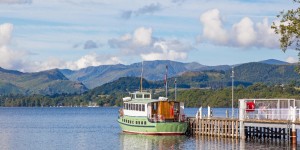
Image: David Steele/Shutterstock.com
Aira Force
Located close to Ullswater, Aira Force is one of the Lake Districts most spectacular waterfalls. Situated on National Trust land, it offers car parking facilities, disabled access, graded paths, viewing platforms, public lavatories and a café at the site. The facilities are open to visitors throughout the year.
The Rheged Centre
The Reghed Centre, named after the ancient Kingdom of Rheged, is one of Cumbria’s most popular visitor centres. It’s the UK’s largest grass covered building, housing the biggest 3D cinema screen in the northwest. There is also a selection of cafes, restaurants, craft shops and food producers.
For families, there is an indoor and outdoor play area. There is also a varied programme of children’s events throughout the school holidays.
See more things to do in our Things to do in Penrith Page.
Where to stay?
Penrith a great place to stay if you want to explore the North Lakes. It has a great range of accommodation to suit all tastes and pockets. For a small town, there’s a surprising amount of choice in hotels, guesthouses and self-catering cottages. There is also the option of hostel or campsite accommodation.
The next rung on the local accommodation ladder are guesthouses and small family hotels. You also have holiday homes that could work out as a good deal, if they have a maximum occupancy. That’s commonly 3 – 6 people. Some also have minimum stays of 2 or 3 nights.
Prices
A rough estimate of accommodation costs in and around the town would be:
Shared dormitory/private room in a hostel: £25/£50
Guesthouse or travel lodge: £40 – £60
Hotel: £70 – £100
Holiday home: £250 – £500 (3 to 6 people)
Find a place to stay in Penrith in our Business Directory.
